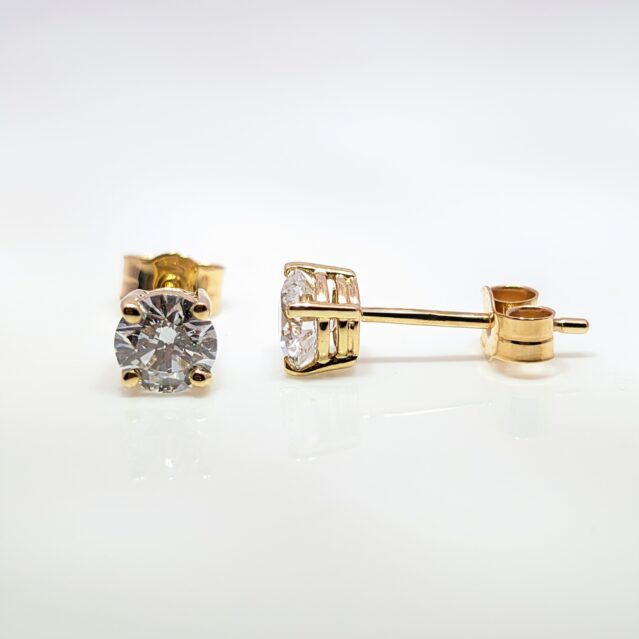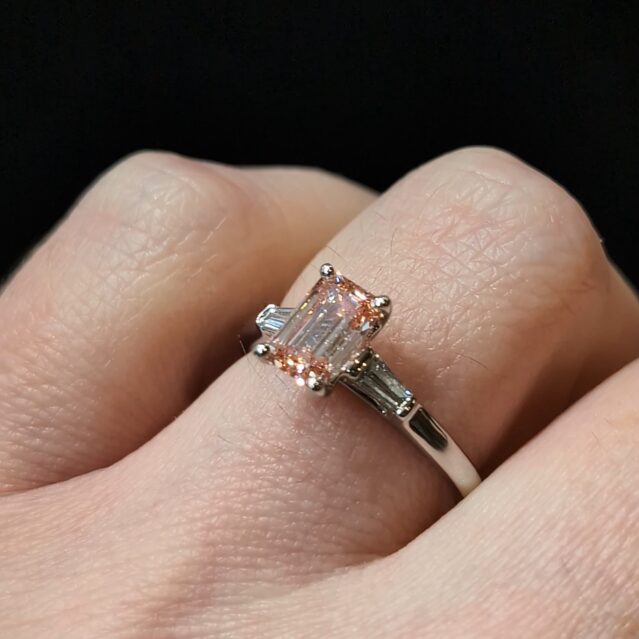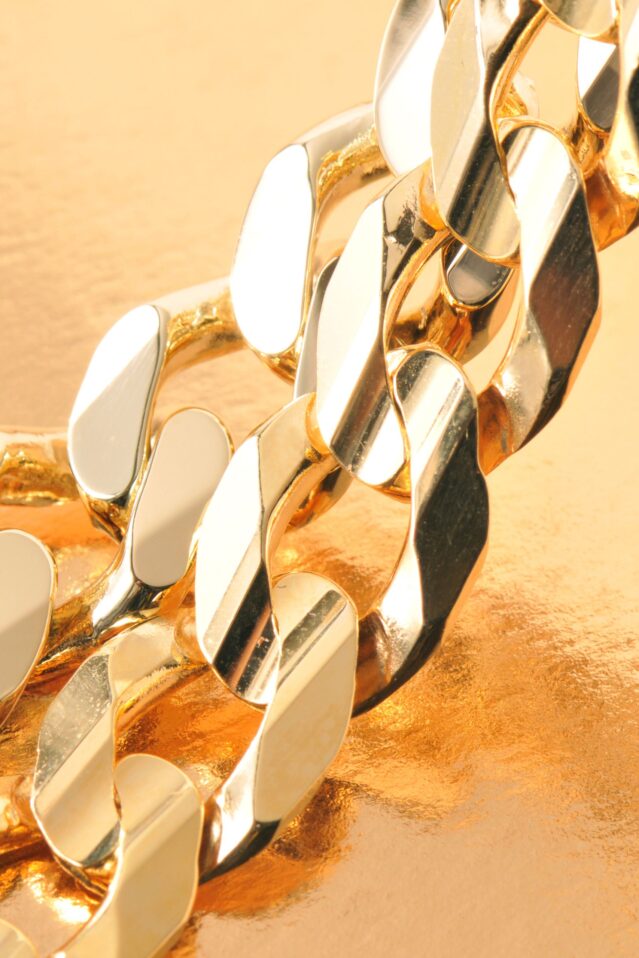
Our Ethical Jewellery Mother’s Day Gift Guide
Mar
07
Richard
5 minutes
Finding that perfect piece of jewellery can often be a challenge. Sometimes it’s hard to know where to even start, which is why most people lean towards the classic gold.
When it comes down to the ins and outs of which is best, some sceptics often doubt the comparative value of white gold. But, we’re here to tell you it can be just as beautiful and valuable as any yellow gold. So besides colour, what makes these two metals any different? And which one should you be choosing? Let’s find out.
Gold has always been one of the world’s most valuable materials. However, this metal has to take a few steps before becoming any piece of gold jewellery. To understand the difference between white gold and yellow gold, it’s crucial to know how gold is made.
Pure gold is actually a very soft and malleable metal. So, to make it into wearable pieces, jewellers have to combine gold with harder metals, making a gold alloy. An alloy metal can transform gold’s texture, colour, and chemical properties. However, jewellers must balance the alloy metals’ properties with the content value of gold.
Pure gold can turn into many different shades and it all comes down to the alloy formula.
All raw gold starts as yellow, so the fewer alloy metals used, the more yellow the gold remains. With more alloy metal, raw gold can transform into a range of gorgeous colours including the following:
Yellow gold – This requires as little alloy metal as possible. Most jewellers use small percentages of copper and silver to create this stable yellow gold. You can use pure yellow gold in jewellery, also known as 24ct gold, but its softness makes it risky to wear day to day.
White gold – Raw gold often combined with titanium and nickel. These alloys dilute the yellow shade, creating a clean and striking “white” colour.
Rose gold – Copper and silver alloys create the beautiful pinkish hue of rose gold. Once a vintage style, rose gold has experienced a huge resurgence in popularity.
Both white gold and yellow gold are high-quality metals however, they do differ significantly in strength. Due to a higher content of alloys, white gold jewellery is more resistant to dents, scratches and damage compared to yellow gold. For everyday jewellery wearers, white gold may be a more logical choice.
On the other hand, if you’re looking to repair your existing jewellery or resize a ring, the softness of yellow gold can actually work in your favour. As yellow gold is softer, it makes it a lot more malleable, meaning it can adapt to a new shape or size with ease. Whereas white gold’s harder structure can make repairs and resizing difficult.
The pricing of jewellery always depends on its quality. For gold, quality is determined by purity not colour. This is because gold has a measurable purity value, the carat.
A carat is a unique measurement of pure gold. A higher carat value means more weight of pure gold within the jewellery and thus a higher price. Both white and yellow gold range across carat values, broken down into these standards:
| Carat | Parts Pure Gold | % Pure Gold | Price per gram |
| 9 | 9/24 | 37.50% | £19.39 |
| 14 | 14/24 | 58.30% | £30.27 |
| 18 | 18/24 | 75.00% | £38.92 |
| 22 | 22/24 | 91.60% | £47.57 |
| 24 | 24/24 | 99.97% | £51.90 |
Overall, white and yellow golds are fairly priced precious metals. They outvalue sterling silver jewellery but are significantly less than the steep costs of titanium or platinum.
The best gold for you is the one that makes you happiest. To find that perfect piece, consider these factors:
Lifestyle – Do you mind polishing a yellow gold ring a little more often? Or is maybe annual rhodium replating on your white gold worth the protection and brightness? All in all, every piece of gold requires maintenance and it comes down to what qualities you care most about for your jewellery.
Cost – No matter the colour, all gold has a similar price at the same carat value. Unless you want a 24ct piece, both yellow and white gold come in a range of qualities and price points. If your budget is tight, maybe consider a lower carat value.
Preferred Jewel – With gemstones, the metal sets the stage. If your heart is set on a warm-toned ruby, then you should probably consider a complimentary yellow gold. Similarly, a sharp blue topaz stone would look best on a white gold ring. To avoid clashing, try to match the undertones of your desired gem and gold metal.
Skin tone – Metal jewellery heavily impacts skin tone, either matching or clashing with your undertones. Cool skin tones usually love white gold, while warm skin tones light up with yellow gold.
Preferred style – Above all, your jewellery should match your taste. Whether white or yellow gold, always follow your heart and personal style when picking out jewellery.
Your jewellery should make you happy for a lifetime, so we hope our guide can illuminate your path to the luxury piece that you desire. If you still need a little more help, why not book an appointment to talk to one of our jewellery experts.

Our Ethical Jewellery Mother’s Day Gift Guide
Read moreMar
07

Ethical Jewellery and Why It Matters
Read moreMar
05

Sustainable Brilliance with Lab-Grown Diamonds
Read moreJan
29

How Can You Sell Your Gold Jewellery in Norwich?
Read moreJan
01
Join our newsletter
Metal Guide
375 = 9ct Gold
585 = 14ct Gold
750 = 18ct Gold
950 = Platinum
925 = Sterling Silver
Book A Viewing
Want to view a piece of jewellery up close and personal? Book a viewing in our Norwich store by completing the 'Book an Appointment' form below.
Book A Viewing